#Classical Greece
Explore tagged Tumblr posts
Text

roof of the pantheon
#mine#photography#rome#italy#religious#ancient rome#ancient roman architecture#classical greece#black and white#sepia
1K notes
·
View notes
Text
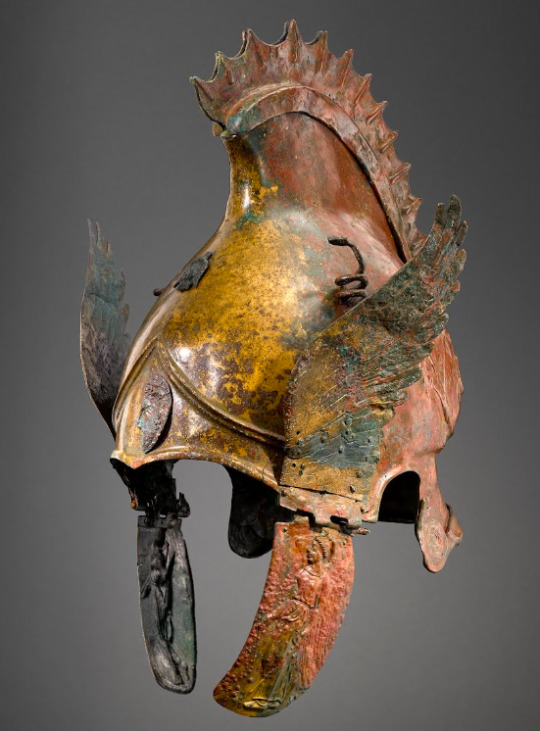
Phrygian-Chalcidian winged helmet with a spiked crest | c. 400 - 300 BCE | greece, classical period
"Behind each wing is a feather holder in the form of a coiled snake, an embossed eagle is above the gabled brow. In the centre of the brow is a partially preserved Gorgoneion motif. The hinged cheek pieces are adorned with images of the goddesses Nike and Artemis. This is a rare and ornate helmet that must have been the prize possession of a high status warrior."
in the permanently closed musée d'art classique de mougins collection via google arts & culture
989 notes
·
View notes
Text
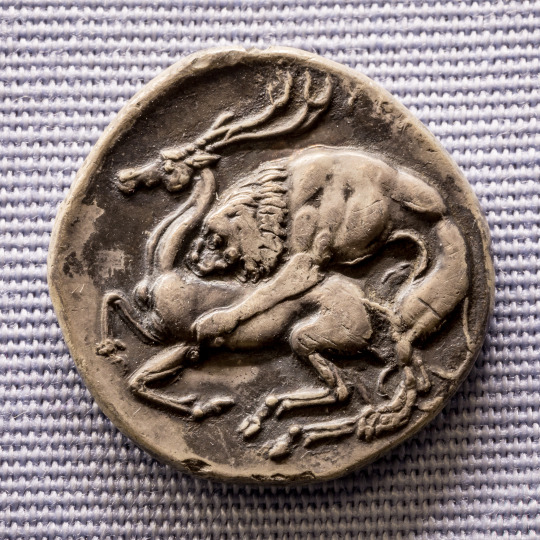
A lion attacks a stag. Reverse of a silver didrachm issued by the polis of Elea in southern Italy between 420 and 380 BCE. The obverse, not shown, bears the head of Athena. Now in the Staatliche Münzsammlung, Munich, Germany. Photo credit: ArchaiOptix/Wikimedia Commons.
#classics#tagamemnon#Ancient Greece#Magna Graecia#Classical Greece#art#art history#ancient art#Greek art#Ancient Greek art#Classical Greek art#coins#ancient coins#Greek coins#Ancient Greek coins#didrachm#numismatics#ancient numismatics#Staatliche Münzsammlung#animal violence tw
786 notes
·
View notes
Text
Mythology Olympics tournament round 1
Propaganda!

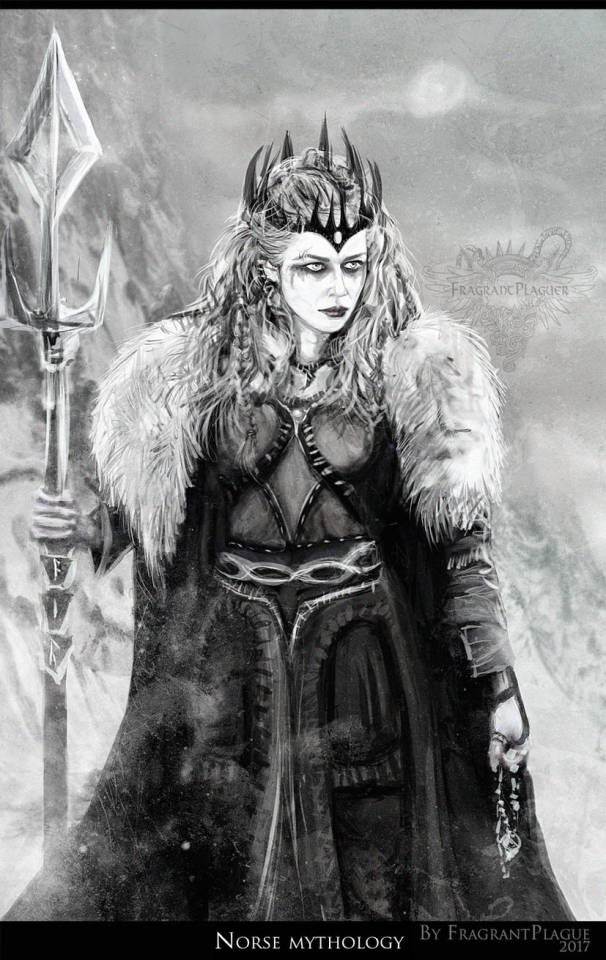
In Greek mythology, Antigone is a Theban princess and a character in several ancient Greek tragedies. She is the daughter of Oedipus, king of Thebes; her mother is either Jocasta or, in another variation of the myth, Euryganeia. She is a sister of Polynices, Eteocles, and Ismene. The meaning of the name is, as in the case of the masculine equivalent Antigonus, "in place of one's parents" or "worthy of one's parents". Antigone appears in the three 5th century BC tragic plays written by Sophocles, known collectively as the three Theban plays, being the protagonist of the eponymous tragedy Antigone.
Angrboða (also Angrboda) is a jötunn in Norse mythology. She is the mate of Loki and the mother of monsters. She is only mentioned once in the Poetic Edda (Völuspá hin skamma) as the mother of Fenrir by Loki. The Prose Edda (Gylfaginning) describes her as "a giantess in Jötunheimar." Her name has been translated as 'the one who brings grief', 'she-who-offers-sorrow', or 'harm-bidder'. The first element is related to the English word "anger", but means "sorrow" or "regret" in Old Norse, the later meaning is retained in Scandinavian languages. [art credit]
#antigone#angrboða#angbroda#angbrotha#poll#polls#tumblr poll#tumblr polls#tournament poll#wikipedia#mythology#mythology tournament#greek#classical greece#ancient greece#greek mythology#greece#norse mythology
191 notes
·
View notes
Text
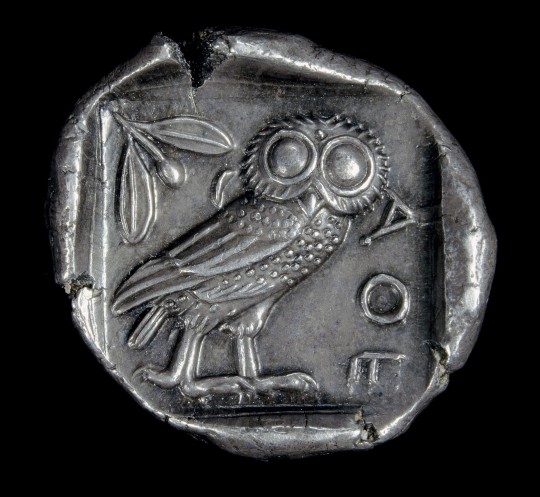
Reverse side of an Attic silver tetradrachm (τετράδραχμον, 'four drachmas'), depicting the owl of Athena facing forward, with the abbreviation ΑΘΕ (ΑΘΕΝΑΙΩΝ, 'of the Athenians'), indicating the coin's origin. Such coins were often referred to as glaukes (γλαῦκε��, 'little owls') and became widespread throughout the Aegean during the 5th century BC as Athenian dominance over the eastern Mediterranean grew.
🏛️: © The Trustees of the British Museum
#classics#classical antiquity#classical greece#ancient greece#ancient greek#greece#greek#ancient history#athens#ancient athens#athena
648 notes
·
View notes
Text

..
#archaeology#greece#history#marble#architecture#traveling#original photography#sounion#ancient greece#travel#aegean sea#antiquity#temple#original photographers#mediterranean#columns#classical greece#travelling#sunion#ancient art#ruins#aegean#mediterranean sea#coast#sea#seaside
69 notes
·
View notes
Text
Sketch of my version of Odysseus/Ulyses for an animation project at school, based on “No Longer You” of Jorge Rivera-Herrans.
I tried to use as much of Classical as Bronze Age Greece for the design.
What do we think, people? 🤍


#original art#sketch#sketchbook#art study#artists on tumblr#small artist#portrait#mythology and folklore#digital art#the odyssey#epic the musical#epic underworld saga#epic odysseus#greek mythology#odysseus#classical greece#mycenaean#bronze age#digital drawing#concept art#character design
27 notes
·
View notes
Text
On This Day In History
November 23rd, 534 BCE: Thespis of Icaria becomes the first actor to play a character on stage in recorded human history.
215 notes
·
View notes
Text

On Dionysus
E. R. Dodds in his Introduction to Euripides' Bacchae
#queueing and quoting.#dionysus#bacchus#bacchae#the bacchae#euripides#e r dodds#classic lit#greek mythology#greek gods#classical greece#greek literature#classical studies#tagamemnon#~just a sinner.#books#reading#book quotes
90 notes
·
View notes
Text


wine cup with a woman drinking in a storeroom | c. 460 - 450 BCE | athenian, classical period
in the j. paul getty museum collection
236 notes
·
View notes
Text

Silver dekadrachm (42.68 g) of Dionysius I, tyrant of Syracuse from 405 to 367 BCE. Minted between 404 and 390, this coin is a rare case in which we know the artist -- Euainetos, who signed his name on the reverse die.
On the obverse, a charioteer is driving a quadriga (four-horse chariot), using a kentron (goad) to spur the horses on. The goddess of victory, Nike, flies above and crowns the charioteer. Beneath a heavy exergual line, we see an Attic-style panoply (shield, greaves, cuirass, and helmet) connected by a spear, with the letters AΘΛA ("contests"). This design reflects Dionysius' sponsorship of chariots at the various Panhellenic games, a tradition he inherited from prior tyrants of Syracuse, as well as his military ambitions.
The reverse bears the head of the river-nymph Arethusa. The Greeks believed that the river Arethusa began in the Peloponnese and flowed underground until reaching Sicily. They explained this with a myth in which Arethusa dived underground to escape pursuit by the river god Alpheus. Around Arethusa are four dolphins, symbolizing both her passage through the sea and the maritime focus of Syracuse (Dionysius expanded her navy, and she was a major mercantile power as well).
Photo credit: Classical Numismatic Group, Inc. http://www.cngcoins.com
#classics#tagamemnon#history#ancient history#Ancient Greece#Sicily#Classical Greece#art#art history#ancient art#Greek art#Ancient Greek art#Syracuse#Syracusan art#Dionysius I#coins#ancient coins#Greek coins#Ancient Greek coins#numismatics#ancient numismatics#dekadrachm
140 notes
·
View notes
Text
Ancient World Dashboard Simulator

🐢 aristotlestortoise Follow
I'm so sick of these philosophers waving dead chickens around to prove their point like that's not contributing to unnecessary food waste when children are starving in Gaul

🦷 diogenessimp Follow
and who says they didn't eat the chicken afterwards you presumptuous garum sipper
besides how would that benefit a starving child in gaul diogenes did that in athens thats like 6000 stadia away from gaul

🐢 aristotlestortoise Follow
As if donating a day-old chicken that had been used as a prop isn't a hazard for food poisoning or something geez
How about you bring in a live chicken and demonstrate your point with that and then donate it to a godsdamned farmer who can do something with it

🦷 diogenessimp Follow
look neither of us understands diogenes whole school of thought as well as he does and if he thinks using poultry for props is the best choice then imma trust he knows what he's talking about

🦣 giantwoolybones
do you guys know that you are arguing about a dead chicken
24,874 notes

👨👦 corophilus

not to be an art critic on main or anything but has this sculptor ever heard of a dynamic pose
#a boy this age would be moving!!
3 Notes

✊ p-o-p-u-l-a-r-i-s Follow
The people just don't seem to care about how Caligula keeps beginning new construction projects with public funds. People are homeless and starving and he puts up a new theater in the middle of the city as if we need that.
Now he's claiming to be a god?? Plus there's rumors he has sex with his horse.
It's very important that you contact the members of the senate to let them know the people are ready to rise up if they don't depose Caligula. We should get organized and flood the streets.

🎽 crixusstan
I see you not reblogging this. Come on, this should have 200k notes
14,381 Notes

💸 achaemenid Follow
Dude, this invention of the coin is so iconic. Cyrus is gonna go down in history for this one. I mean that in a good way.

🪙 lydianmetallurgy Follow
Sorry but Cyrus stole the entire concept of the coin from us and I'm sick of people acting like we didn't have contributions to make to advancements in science and culture just because we were conquered by your stupid empire. Cyrus is a tyrant and just wants to gather as much power as he can.

🦁 daniyye
Cyrus let my people go back to our homeland, so he's all right by me
#by the rivers of Babylon we sat and wept when we remembered Zion #now we don't have to do that anymore!!
18 Notes

🥇 gladiatorheadtohead Follow
Remember, you're voting for who you think would win the fight, not who you like the best.
24 Notes

🐺 lyca
just left my den and there's just 2 human babies lying on the ground all alone
wtf do i do

🐺 lyca
so i happen to already be lactating so i guess... i just have 2 more cubs now?

🐺 lyca
guys these babies are so cute. i think they're going to do great things one day
#personal #do not reblog i mean it this time 6 Notes

🍆 miletus-leather Follow

The best sex toy shop in Miletus. Come see our selection!

🦌 artemisbow Follow
I'm not one to harsh on a small business trying to make it but I've been to this shop and women are an afterthought here. You'd think the only people interested in dildos were men the way they act here.

🍆 miletus-leather Follow
Women should be weaving and taking care of their children, not coming into our sex shop.

😈 hermescock Follow
K

🐐 blessedsatir
U
64 Notes
#dash simulator#dashboard simulator#ancient rome#classical rome#ancient greece#classical greece#ancient persia#ancient israel#ancient lydia#bonus since i know you want to know gaul was 13000 stadia from athens
514 notes
·
View notes
Text
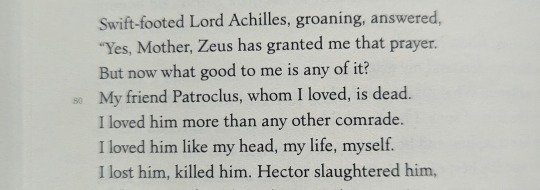
The Emily Wilson translation is giving me gay whiplash
#the iliad#achilles#patrochilles#emily wilson#classical greece#the classics#patroclus#achilles x patroclus#sappho and her friend
290 notes
·
View notes
Text

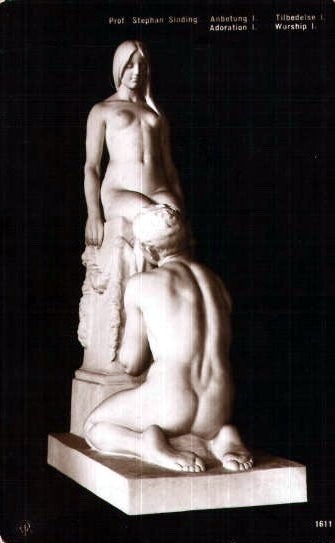
© Manuel Cojocaru, self timer picture, inspired by Stephan Sindig, Adoration (1903)
#stephan sinding#adoration#sculpture#classical art#classical greece#ancient greek#ancient sculpture#artistic nude
98 notes
·
View notes
Text
Gotta say. Apollo was the first twink. If you disagree I don’t care. Argue with the wall
#it’s true#it just is#I don’t make the rules#own post#funny stuff#greek mythology#greek myth memes#lgbt#lgbtq#classics#classical Greece#Ancient Greece#Greek gods
115 notes
·
View notes
Text
Last time I posted Leo and Diane Dillon’s Greek gods from the 60s Classical Greece book by Time-Life. These are the heroes and mortals now!

Io
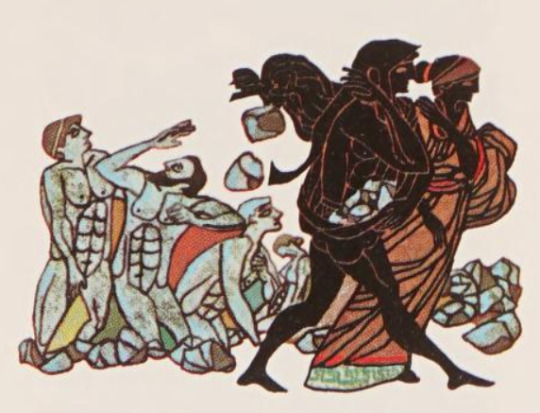
Deucalion and Pyrrha
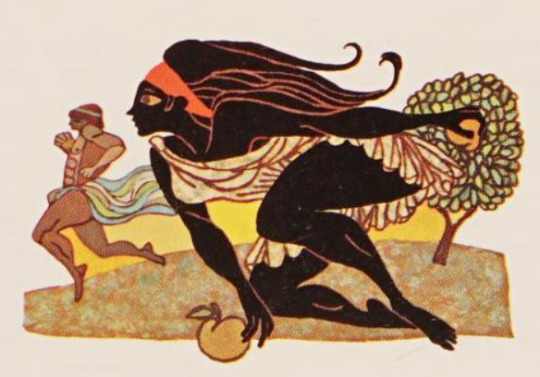
Atalanta

Heracles

Oedipus
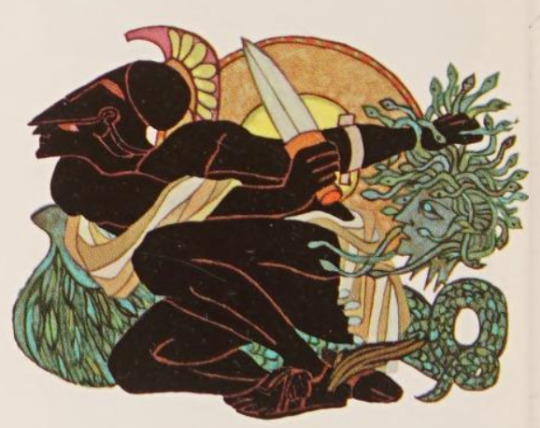
Perseus

Cadmus
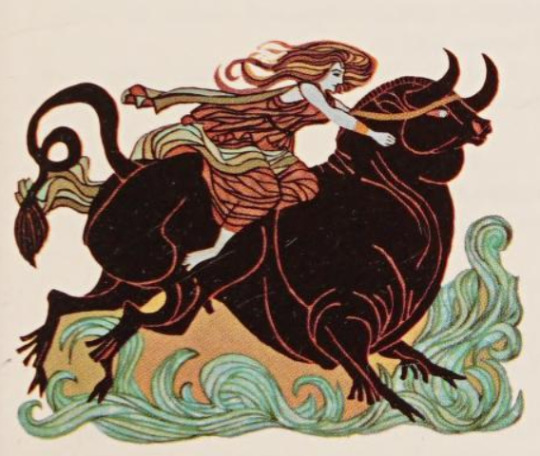
Europa

Jason

Theseus (wait... a reverse Minotaur? Is that allowed???)

Bellerophon

The Trojan War
388 notes
·
View notes